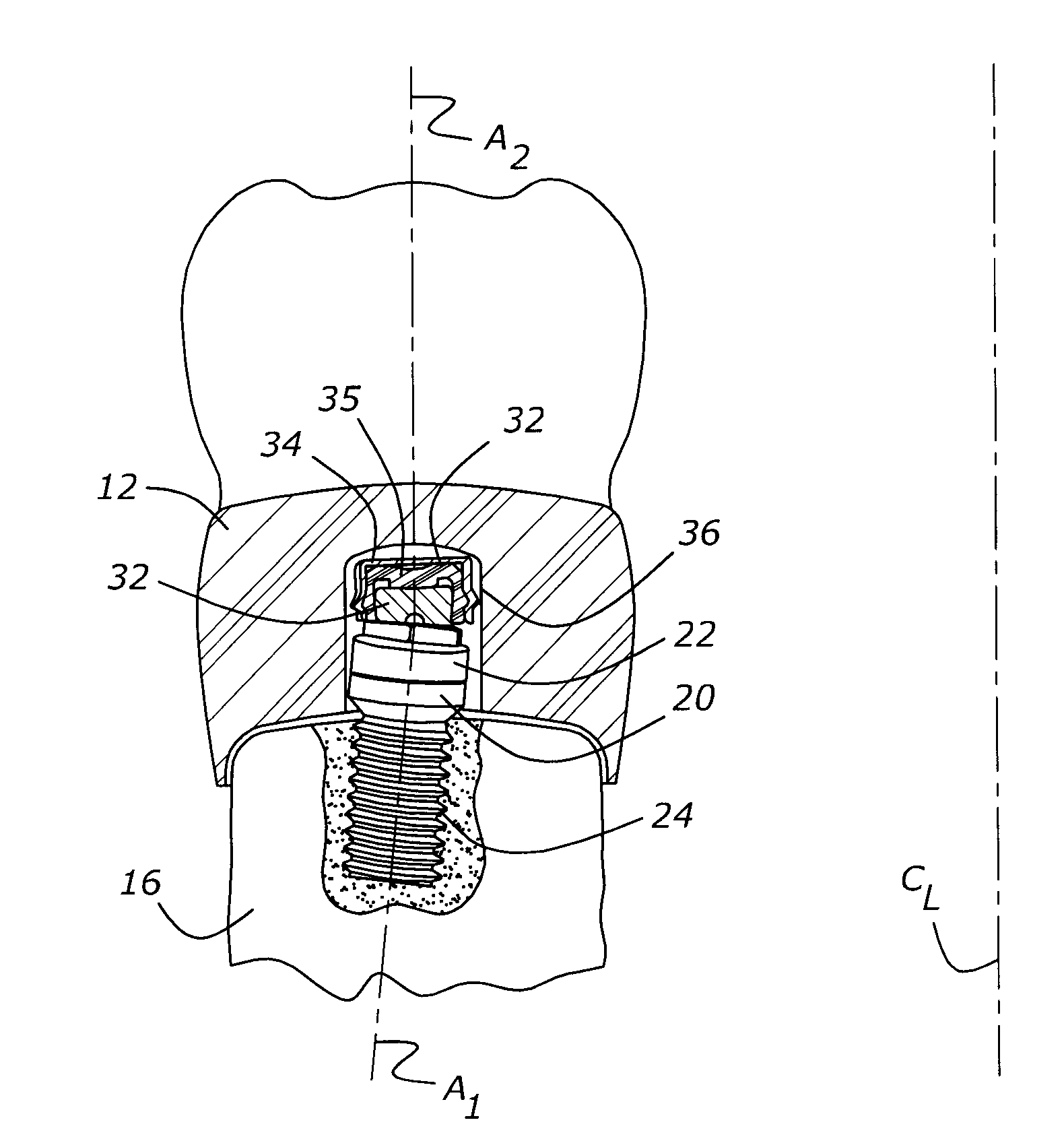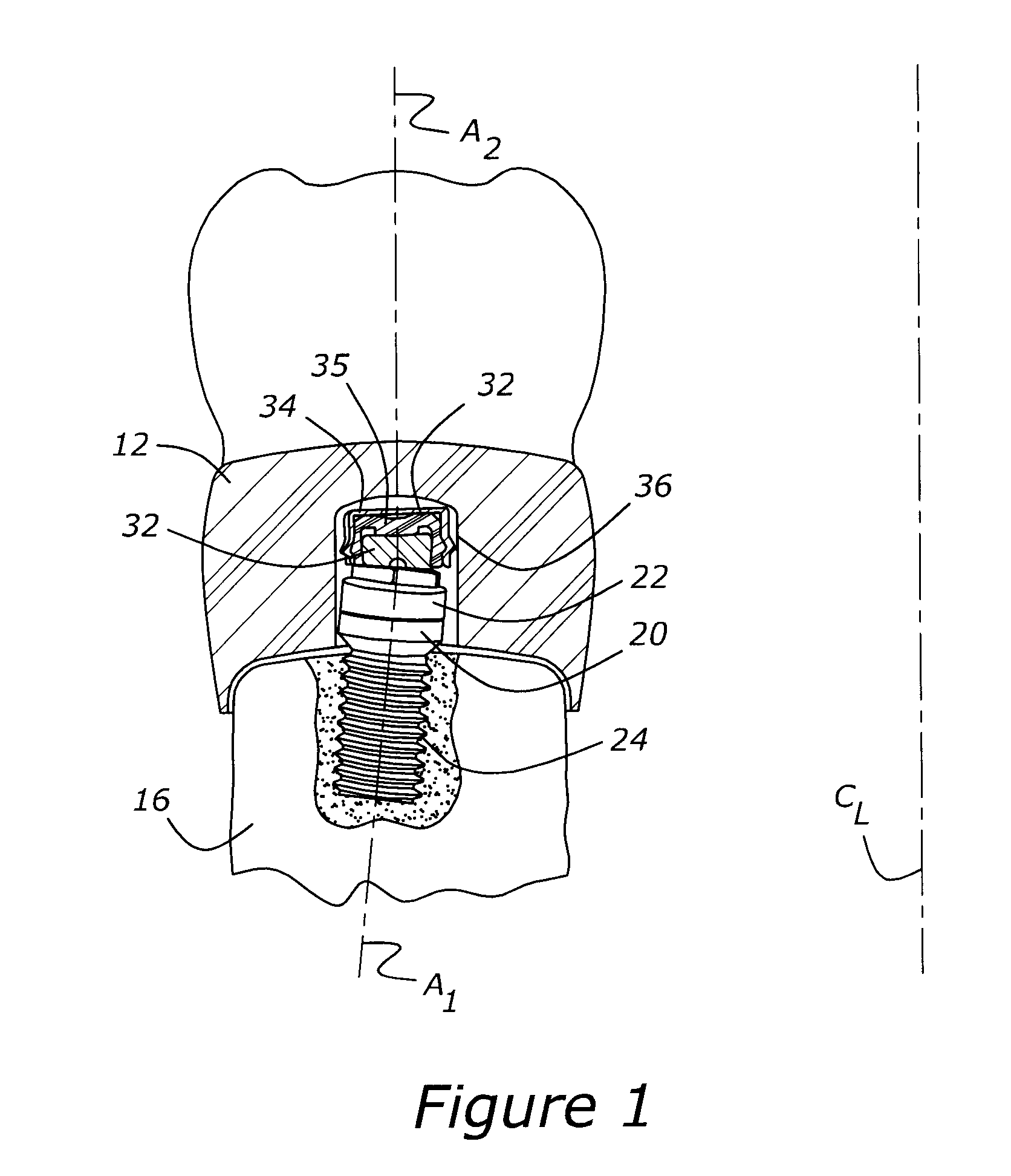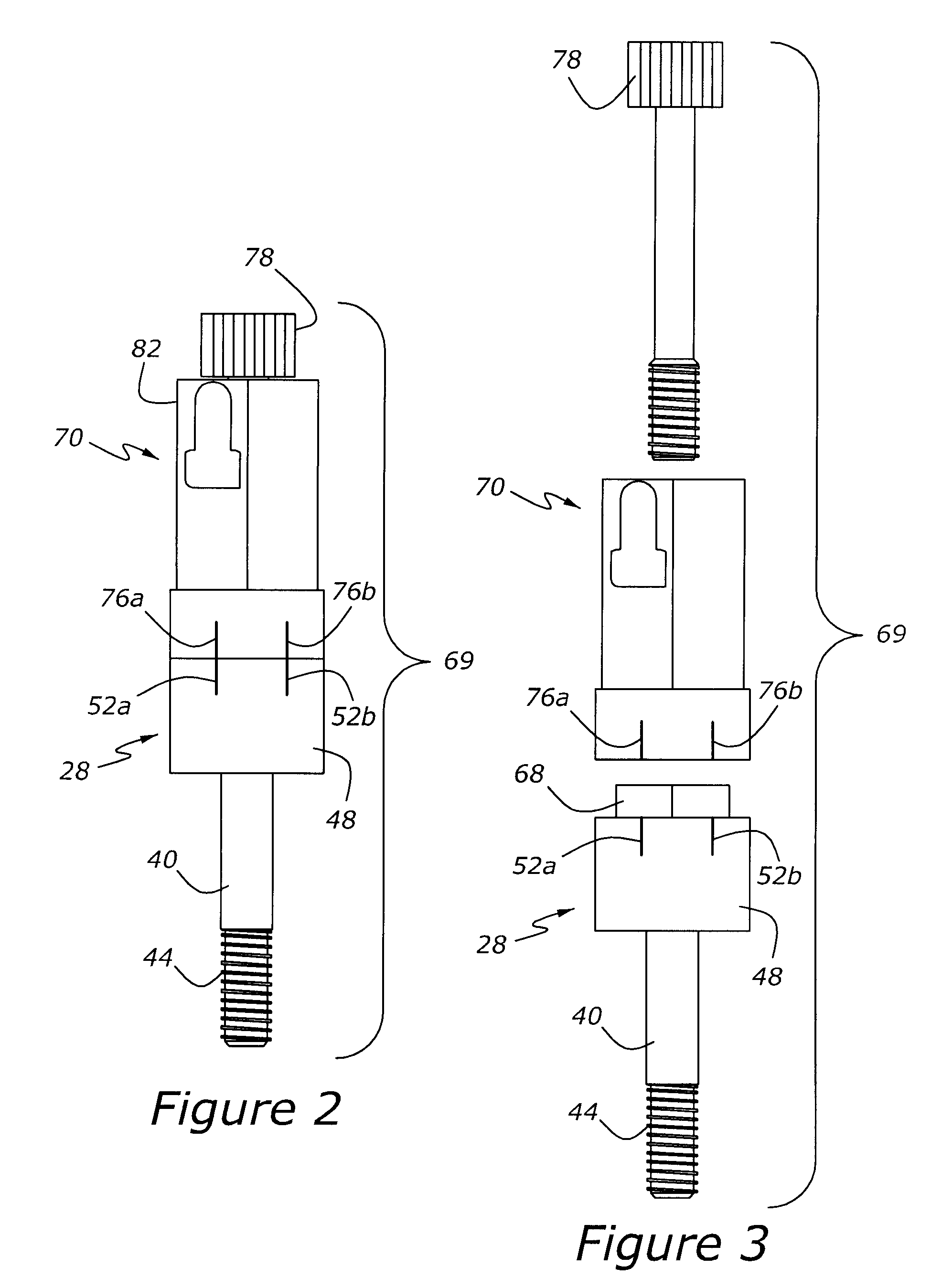Method for fabricating an implanted dental restoration
- Summary
- Abstract
- Description
- Claims
- Application Information
AI Technical Summary
Benefits of technology
Problems solved by technology
Method used
Image
Examples
Embodiment Construction
[0029]As shown in FIG. 1, an implant-based dental restoration includes an implant, 20, which is shown as having been placed within a patient's mandible, 16. As shown in FIG. 1, the center axis, A1, of implant 20 is not parallel to the center line, or more precisely, the central plane, CL, of the patient's mandible. In other words, implant 20 is at an angle to an imaginary central plane, CL, extending through the patient's mouth. This lack of parallelism is not desirable, and is typically corrected through the use of hardware further described herein. The dental restoration also includes an abutment base, 22, which is threaded into internal threads, 24, carried within implant 20. Abutment base 22 provides a mounting location for a geometric compensator 32, which corrects for the angular mismatch between axis A1 of implant 20 and center line or plane CL of the patient's mouth. Geometric compensator 32 allows the axis, A2, of a pressure sensitive fastening, 36, which is attached to geo...
PUM
 Login to View More
Login to View More Abstract
Description
Claims
Application Information
 Login to View More
Login to View More - R&D
- Intellectual Property
- Life Sciences
- Materials
- Tech Scout
- Unparalleled Data Quality
- Higher Quality Content
- 60% Fewer Hallucinations
Browse by: Latest US Patents, China's latest patents, Technical Efficacy Thesaurus, Application Domain, Technology Topic, Popular Technical Reports.
© 2025 PatSnap. All rights reserved.Legal|Privacy policy|Modern Slavery Act Transparency Statement|Sitemap|About US| Contact US: help@patsnap.com



